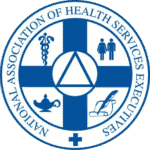Nine years ago, the first of 78 million Baby Boomers turned 60, and 2008 was supposed to see a huge number of retirements. When the first Baby Boomers began to draw benefits, the Social Security Administration dubbed it the start of “America’s silver tsunami,” but then the economy faltered, housing values plummeted, retirement portfolios shrank, and healthcare leaders who thought they had planned for financial security decided to postpone retirement for a few years. Now the economy is strong once again, candidates are in the driver’s seat, and statistics are coming in saying that large numbers of FQHC senior management will be retiring soon. And, this is occurring when there are initiatives and demands for increasing capacity everywhere in the community healthcare market!
For most community healthcare companies, the first priority is still hiring for open positions and retaining high performers. “CHC leaders are intuitively aware of the retirement challenges ahead of them, however; this challenge gets kicked down the road with the immediate openings taking top priority” according to Tim Mulvaney, President and CEO of UHC solutions. Our recruiters, board members, as well as our FQHC leaders are indicating that they are somewhat to extremely concerned about replacing Baby Boomers who are reaching retirement. While companies indicate concern, the vast majority have not proactively addressed it, indicating in a recent survey that they are largely unprepared to deal with a surge in retirements or a millennial-dominated workforce. Top areas of concern include feeling ill-equipped to develop programs to retain Baby Boomers, and lack of knowledge about how to accommodate the work-life balance demands of the younger generations.
“It is critical that companies begin to address retirements with more focus on succession planning and career pathing,” advises Tim. “Instead of treating retirements as an afterthought,” he says, “their inevitability should be woven into recruitment and retention plans. Companies that craft a long-term comprehensive strategy now will not only survive the wave of baby boomer retirements, but will have the potential to ride its crest.”
Mulvaney suggests exploring the following questions to understand the immediacy of the baby boomer exit and to thoughtfully prepare for it:
- What are your company’s demographics (age, gender, position, and years in position)?
- Does your succession plan identify people in your organization who are ready to assume leadership positions? Do you need to create new positions now in order to develop the bench strength you need in the years ahead?
- What mechanisms and programs must be put in place to capture the key competencies and critical work knowledge of employees who will be retiring?
- Are you ready to customize your current programs to provide what each group needs and wants, particularly in terms of career pathing? Your workforce will likely be comprised of both young workers and older workers, who have different learning needs.
- Are you prepared to implement flexible work arrangements, such as working part-time or from home, which will both encourage Baby Boomers to continue working and satisfy Millennials’ need for better work-life balance?
- Is your organization positioned to meet the needs of your over-65 patient segment when your Baby Boomers leave? What new skills and competencies will your younger employees need to service this segment?
“Most people don’t want to work forever,” concludes Tim. “They may have decided to stay around for a few extra years to ride out the financial crisis, or perhaps even have come back as consultants, but planning on people to remain on the clinic team after retirement isn’t a succession plan. The only way to reduce the effect of lost leadership is through a strong succession planning program that identifies and fosters the next generation of leaders through mentoring, training and stretch assignments, so they are ready to take the helm when the time comes.”
“Succession planning and change in personnel should not be looked at as a task to be avoided, it should be looked at as an opportunity to refresh, top-grade, implement new ideas, improve patient care and to energize an organization.”
Dave Cunningham
Vice President/Director of Dental Recruitment
UHC Solutions
Notable Recent UHC Placements
- San Francisco Community Clinic Consortium – Chief Executive Officer, Sabra Matovsky
- Kenosha Community Health Center – Chief Executive Officer, Brent Rafferty
- Penobscot Community Health Center – Chief Executive Officer, Lori Dwyer
- Edward M. Kennedy Health Center – Chief Medical Officer, Pablo Hernandez Itriago, MD
- Anchorage Neighborhood Health Center – Chief Medical Officer, Phillip Mendoza, MD
- Clinica Sierra Vista – Chief Dental Officer, Jay Anderson DMD
- Charles Drew Health Center, Inc – Dental Director, Brad Smith, DDS
UHC Solutions is a network affilate of management recruiters international. UHC is recognized by many to be the premier community healthcare recruiters in the nation.
October 2017 | Issue 10 | Vol. XI
One Centerpointe Drive
Suite 580
Lake Oswego, OR 97035
www.thefqhcrecruiters.com





